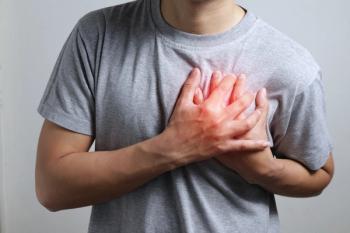
National Opioid Crisis: Expanding the Role of the Pharmacist
To streamline the way opioid treatments are administered and to successfully treat addicts, a pharmacist’s clinical expertise is maximized in a medication-assisted treatment setting within opioid treatment programs.
Opioid abuse and addiction have devastated our nation at every level of socioeconomic status and demographic. According to the US Centers for Disease Control and Prevention (CDC), opioid abuse had become a national epidemic, with
To streamline the way opioid treatments are administered and to successfully treat addicts, a pharmacist’s clinical expertise is maximized in a medication-assisted treatment (MAT) setting within opioid treatment programs (OTPs).
MAT for Opioid Abuse
MAT is the combination of medications, counseling, and behavioral therapies to treat substance use disorders and to prevent opioid overdose. Research shows that medication and therapy can successfully treat these disorders. For some patients struggling with addiction, medication assisted treatment can sustain recovery.
Methadone is used in medication-assisted treatment for opioid treatment therapy and has a high potential for misuse. In addition, methadone only can be dispensed through a Substance Abuse and Mental Health Services Administration (SAMHSA)-certified OTPs.
Unfortunately, MAT is greatly underused. According to
Opioid Treatment Programs: Facts
- OTPs provide medication-assisted treatment for patients diagnosed with an opioid use disorder.
- OTPs provide a range of services to reduce, eliminate, or prevent the use of illicit drugs, potential criminal activity, and/or the spread of infectious diseases.
- For those receiving treatments, OTPs focus on improving the quality of patients’ lives.
Opioid Treatment Programs: Accreditation and Federal Law
- OTPs must be accredited by a SAMHSA-approved accrediting body and certified by SAMHSA.
- The Division of Pharmacologic Therapies, part of the SAMHSA Center for Substance Abuse Treatment, oversees accreditation standards and certification processes for OTPs.
- Federal law requires patients who are admitted to OTPs to receive prescribed medications, as well as medical, counseling, vocational, educational, and other assessment and treatment services. The law allows medication-assisted treatment professionals to provide therapy and services across a range of settings, including hospitals, correctional facilities, offices, and remote clinics.
OTP Accreditation Requirements
According to section 42, Code of Federal Regulations (CFR-42), in order for an entity to acquire accreditation as an OTP, they must comply with the following:
Federal Opioid Treatment Standards
- General: OTPs must provide treatment in accordance with the standards in this section and comply with these standards as a condition of certification.
- Administrative and organizational structure: At a minimum, each OTP shall formally designate a program sponsor and medical director.
- Continuous quality improvement An OTP must maintain annual reviews of program policies and procedures and ongoing assessment of patient outcomes. An OTP must maintain a current diversion control plan.
- Staff credentials: All licensed professional care providers, including addiction counselors, must comply with the credentialing requirements of their respective professions.
- Patient admission criteria Maintenance treatment: An OTP shall ensure that patients are admitted based on accepted medical criteria (DSM-IV) for addiction for at least 1 year and admission is voluntary by the patient giving informed written consent for treatment.
- Required service General: OTPs shall provide adequate medical, counseling, vocational, educational, and other assessment and treatment services. Initial medical examination services: OTPs shall require each patient to undergo a complete, fully documented physical evaluation by a program physician or a primary care physician before admission to the OTP within 14 days of admission to the program. Special services for pregnant patients. Initial and periodic assessment services: Each patient accepted for treatment at an OTP shall be assessed initially and periodically by qualified personnel to determine the most appropriate combination of services and treatment. Counseling services. OTPs must provide adequate substance abuse counseling to each patient as clinically necessary by a program counselor to assess the psychological and sociological background of patients, contribute to the treatment plan and monitor patient progress. OTPs must provide counseling on preventing exposure to, and the transmission of HIV for each patient. OTPs must provide directly, or through referral to adequate and reasonably accessible community resources, vocational rehabilitation, education, and employment services. Drug abuse testing services: OTPs must provide at least 8 random drug abuse tests per year, per patient in maintenance treatment, in accordance with generally accepted clinical practice. Recordkeeping and patient confidentiality. Medication administration, dispensing, and use. OTPs must ensure that opioid agonist treatments (OATs) are administered or dispensed only by a pharmacist, registered nurse, or licensed practical nurse, or any other health care professional authorized by federal and state laws to administer or dispense opioids. OTPs shall use only those OATs that are approved by the FDA for use in the treatment of opioid use disorder. Currently, the only OATs that are considered are methadone, levomethadyl acetate, and buprenorphine and buprenorphine combination products that have been approved for the treatment of opioid use disorder.
Alternate Pharmacist Revenue Sources: Reimbursement for Opioid Addiction Treatment
Pharmacists’ clinical services are underused. For example, in addressing the opioid epidemic, pharmacists are strategically poised to provide services in opioid maintenance therapy (OMT), pain management and opioid dosage reduction with weaning schedules.
Since OTP sites require physician oversight, a relationship with an addiction specialist would be necessary for a pharmacy if it was to apply to become an OTP. Another option for pharmacy involvement in methadone maintenance therapy would be to become a medication unit with an already established and certified OTP.
Medication units, long-term care facilities and hospitals. Certified OTPs may establish medication units that are authorized to dispense OATs for observed ingestion. Medication units should comply with all pertinent state laws and regulations.
The pharmacy setting could be used as a medication unit as a convenient, comfortable location for dispensing OMT and to provide counseling and supportive services. Compared with other health care professionals, pharmacists have better a understanding of OMT medications, toxicities related to half-lives, drug interactions, adverse effects (AEs), and how to manage those AEs. In addition, pharmacists would work closely with affiliated OTPs and be able to provide drug-related recommendations.
It would be advantageous for the pharmacy profession and industry to expand the roles of pharmacists to include more non-traditional roles, such as OMT and advocates for reimbursable services regarding opioid management.
Reimbursement
The issue of how to make it worthwhile for a pharmacist to expand their duties to incorporate OTPs into their daily responsibilities needs to be taken into consideration. Currently, pharmacists are only reimbursed for dispensing medications. However, becoming trained and certified to become a medication unit and MAT provider in the pharmacy, which would be required to manage an addicted patient with methadone, would require additional time, effort, and resources.
The reimbursement for dispensing a methadone prescription on a daily basis would not warrant the expense of having a pharmacist monitoring a patient for opioid abuse disorder. For this reason, it will be necessary to develop creative methods to pay pharmacists for these services.
Earlier this year, a bipartisan opioid task force introduced a bill to create a $25 billion opioid epidemic response fund to provide resources to support states, cities, towns, and communities fighting the drug crisis. The fund would provide $5 billion annually over 5 years targeted toward numerous activities involving agencies such as SAMHSA, the CDC, the National Institutes of Health, and the Health Resources and Services Administration.
SAMHSA has been tasked with using these funds to expand addiction treatment programs. An expansion within a pharmacy setting would increase access in a way that free-standing clinics are lacking. If a model could be established to partner pharmacies with established OTPs and create a fair level of reimbursement for a pharmacist’s clinical services, this would serve as a win-win because it would expand the program as well as the pharmacist’s clinical role in MAT.
CVS MinuteClinic
A model for clinical services that has been implemented with collaboration among nurse practitioners, physician assistants, and pharmacists housed within the pharmacy to provide primary care services in an outpatient setting is the CVS MinuteClinic. In this example of a team approach, CVS demonstrates the value of pairing pharmacists with clinicians to achieve better outcomes for their patients.
This model could be conducive to setting up a free-standing OTP with a pharmacist dispensing methadone for MAT and managing the patient’s maintenance medication needs. Meanwhile, the nurse practitioner would take on a role as medical director.
The rationale for CVS including the pharmacist as part of the clinical team does not establish the pharmacist’s value on the number of prescriptions that they fill, but rather on the belief that benefits will become evident by program successes, which will be achieved by maximizing the pharmacist’s clinical skills. Additionally, successful outcomes of patient treatment will result in overall cost-savings to the health plan.
Conclusion
If the reason that OMT is not being adequately used due to inconvenience or stigma, pharmacists can offer an alternate, non-judging location to treat patients without having them travel to a methadone clinic.
Pharmacists are routinely ranked among the most respected professionals so they are in a position of deep respect and trust with their patients. This relationship should be used to its advantage in establishing the successful treatment of opioid addiction. The pharmacist’s clinical expertise in medication management should be maximized in a MAT setting in an OTP.
About the Author
Nivedita Kohli earned her Bachelor of Pharmacy degree from the Bouvé College of Health Sciences at Northeastern University and is currently enrolled in the Master of Pharmacy Business Administration (MPBA) program at the University of Pittsburgh, a 12-month, executive-style graduate education program designed for working professionals striving to be tomorrow’s leaders in pharmacy business. She spent the past 20 years developing and implementing drug safety initiatives for a health plan and pharmacy benefit management provider serving Western New York. Over the past decade, she spearheaded educational programs for healthcare practitioners around appropriate opioid prescribing in addition to supporting the Erie County Opioid Epidemic Task Force with multi-faceted programs to improve the outcomes and reduce the impact of the opioid epidemic in Western New York. More recently, she is focusing on opportunities to provide high quality, sustainable healthcare in the current US market, employing her skillset in managed care and business.
Work cited
- SAMSHA Medication and Counseling Treatment. https://www.samhsa.gov/medication-assisted-treatment/treatment#otps
Newsletter
Stay informed on drug updates, treatment guidelines, and pharmacy practice trends—subscribe to Pharmacy Times for weekly clinical insights.
















































































































































































































